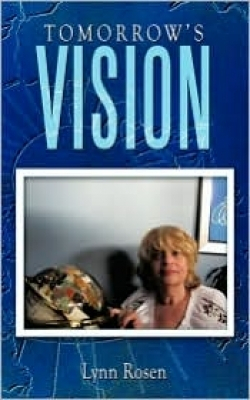Tomorrow's Vision
The world produces enough food to nourish all its human inhabitants, yet many don’t get enough to eat. The United Nations Food and Agriculture Organization reported that, as of October 2010, 925 million souls suffered from malnutrition. Causes include failure of governments and agencies to encourage food production for the poor, greater poverty because of the recent economic downturn, and rising food costs. Despite efforts to alleviate world hunger, the problem persists.
Activist Lynn Rosen would like to see these efforts reap better results. A teacher for twenty-five years in New York City schools, she campaigns for equal rights, universal health care, and stopping worldwide hunger. She volunteers for several agencies dedicated to these causes and teaches abroad in camps and schools for underprivileged children.
Written for students in the middle primary grades, Tomorrow’s Vision encourages them, their teachers, and parents to get involved in this cause. The book begins as Mrs. Janson guides her third-grade students in learning about the problem of hunger, even in their own communities, and realizing what they can do to help. The class forms smaller computer groups to explore an interactive hunger map of the world. After reading and discussing books on the subject in class, the students compile lists of ways they would like to help. They make posters to advertise their campaign to collect food, money, used clothing, and books.
The class presents a report on what they have learned to their school’s parent and teacher group. These adults help the students implement their plans to volunteer at a soup kitchen. “Smiling they helped set the tables and greeted people as they walked in,” Rosen writes. “Since this was breakfast serving was easy.”
Mrs. Janson encourages her class to write poems to express their thoughts and feelings about hunger. After spending two weeks thinking about and writing these poems, the students read them out loud to their classmates. “Mrs. Janson explained that she would take the poems that she accepted and make an anthology.”
Mrs. Jason invites the students’ parents to attend a special gathering in the classroom and presents each child with a certificate of completion of the class unit on world hunger. “They celebrated and discussed their accomplishments,” Rosen says. “They were now activists and once the bug was planted they would blossom.”
This brief book succeeds in describing a process for teaching middle elementary-age students about a pervasive problem in the world. The author writes in language that this age group can understand, but the text’s small font seems incompatible with that goal. Use of active, rather than passive voice, would have added immediacy to a subject that surely warrants immediate attention. Stilted dialogue, clichéd phrases, and careless errors in punctuation, spacing, and word usage distract as well. More thoughtful formatting of text and photographs would offer greater readability and visual interest for students.
Although not an easy book for children to read on their own, teachers interested in teaching them about worldwide hunger may find this book helpful.
Reviewed by
Margaret Cullison
Disclosure: This article is not an endorsement, but a review. The publisher of this book provided free copies of the book and paid a small fee to have their book reviewed by a professional reviewer. Foreword Reviews and Clarion Reviews make no guarantee that the publisher will receive a positive review. Foreword Magazine, Inc. is disclosing this in accordance with the Federal Trade Commission’s 16 CFR, Part 255.

